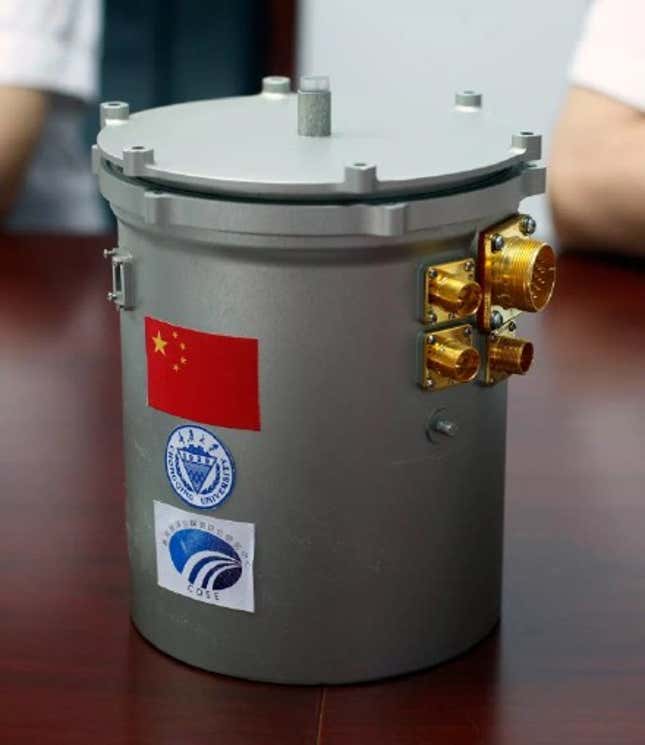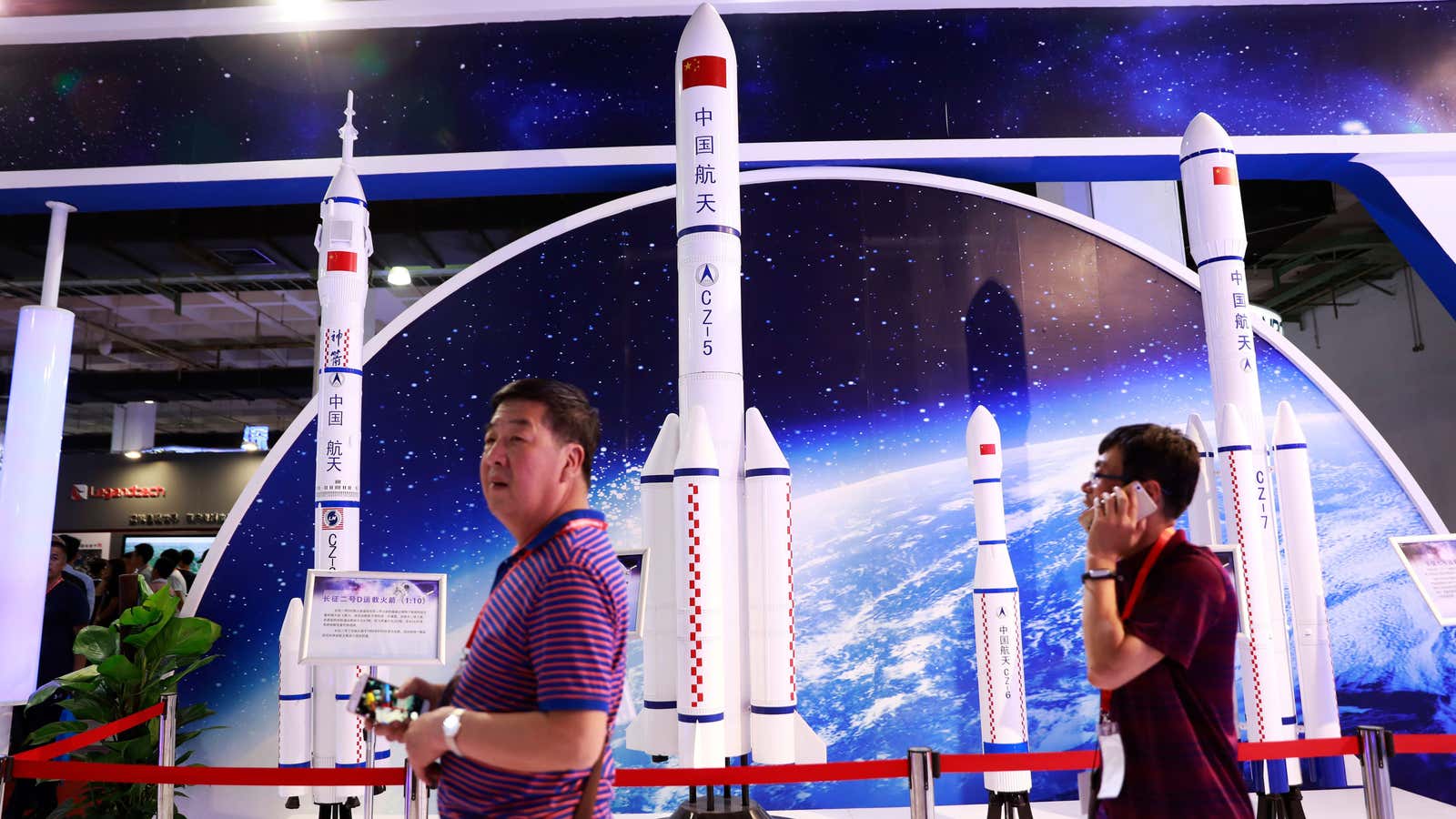Almost half a century ago, the first human landed on the moon, marking “a giant leap for mankind.” This year, China is sending seeds of plants and insects there.
Seeds of potatoes and arabidopsis—a small flowering plant belonging to the mustard family—along with silkworm cocoons, will hitch a ride with the Chang’e-4 lander and rover on China’s first probe to the far side of the moon in December. China hopes to create a “mini lunar biosphere” as part of its research for building a lunar base and even the possibility of long-term residence on the moon.

The plants and insects, contained in an 18-cm-tall (7 inches) bucket-like tin with air, water, and soil, will create an ecological system. A tube inside the tin will direct natural light from the moon for photosynthesis, and the plants will then emit oxygen which feeds the silkworms once they hatch. The insects will then create carbon dioxide and waste, which in turn aids the plants’ growth, according to scientists at Chongqing University who are leading the project. The team hopes to live broadcast (link in Chinese) the progress of the organisms.
The team said that they chose the potato because it could become a major food source for space travel, while the relatively short growth period of arabidopsis makes it convenient for observation.
But serious difficulties await. The moon’s harsh environment, for example, poses challenges for temperature control—temperatures could drop more than -100 °C (-148°F), and the team needs to keep the tin’s temperature between 1 to 30 °C. The experiment will also explore how the moon’s gravity, which is about 16% of Earth’s, affects the survival of living creatures. Studies have demonstrated that microgravity has negative effects on human health.
Liu Hailong, the project’s director, didn’t respond to further queries about the probe.
Astronauts have been conducting similar experiments using arabidopsis and lettuce in the International Space Station (ISS), and have grown rice in China’s second space-lab Tiangong-2. But those experiments were conducted in a relatively low Earth orbit, rather than the complex lunar environment, noted state media Xinhua.
If it succeeds, China will be the first country to land on the far side of the moon, a central part of the country’s space ambitions. It’s also working on a self-sustaining system to support life in a spaceship for long-distance space exploration. The year-long experiment, which sent three batches of students to grow plants and survive by eating the potatoes and beans they cultivate in the cabins, is expected to finish next month.
China spends some $3 billion a year on its space project by one estimate, a small amount compared to America’s $21 billion. But China is catching up fast in space—for example, China could be the only country to have a space station in 2022 after the ISS retires in 2024, while NASA’s new space station won’t be ready until 2023.
